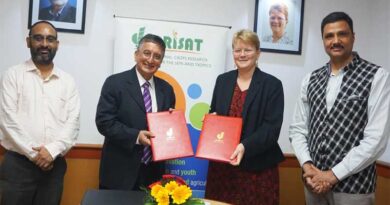By using sugarcane juice to make biofuels, India can make sugar more productive and sustainable
08 January 2022, New Delhi: Rosamond L. Naylor is professor of earth system science at Stanford University. Speaking to at Times Evoke, she discusses why switching sugar to the production of biofuels will benefit nutrition and climate mitigation:
What is the core of your research?
I am an economist. My research focuses on food security and food policy around the world. I take a food systems approach — this means looking at aspects of the food supply chain and the different value added by food systems, including food and fuel
linkages. My research in
India studies the crucial intersection between food security, energy and water. Does sugar have distinctive environmental impacts?
Research by my colleagues and I in India has focused specifically on the water usage involved in growing sugar in relation to other crops in Maharashtra. Sugar is a very water-intensive crop. Since it’s valuable, in many countries, it receives government support. It has thus become a priority crop. It is grown widely in Maharashtra in areas which have fairly shallow hard rock geology, so the groundwater storage isn’t very deep. Farmers can access groundwater but they also need surface water. So, sugar is also grown along command and control areas or where surplus water is released from dams.
Now, sugar consumes both surface water and groundwater. The groundwater gets replenished once the rains come — but this pattern is growing more unpredictable with climate change now. Are there nutritional dimensions to sugar?
In the second half of the 20th century, around the world, the focus of food security was just to ensure that people could get enough calories from the basic staple crops to enable a productive life. But now, in most areas, people largely do have adequate calories — yet, there is a globally increased burden of malnutrition, not from calorie deficits but because people don’t have adequate micronutrients and protein for sustained cognitive and physical growth. India has very high rates of such hidden hunger — many people don’t have adequate iron, causing high rates of anaemia.
Many don’t have enough vitamin A, zinc and other micronutrients which are very important for overall health and development — simply consuming calories isn’t enough.
The second burden of malnutrition is a major rise in obesity and related diseases. An excessive consumption of sugar often leads to these health challenges alongside a deep lack of nutrition. Why are there economic worries around growing more sugar?
As in India and Brazil, many countries developed entrenched interests in growing sugar. With this backdrop, surpluses started to develop.
Meanwhile, there is growing awareness that there are no health benefits to consuming more sugar. So, the dilemma is how to use such sugar surpluses while maintaining revenues for producers and avoiding declining prices. One solution is to create a whole new demand — sugar could be used to make fuel instead of foods. Can biofuels be of help in reinventing sugar?
Biofuels made from crops can be used in the transportation sector as an alternative to fossil fuels. These can be derived from ethanol which can come from sugar or biodiesel from oil crops like soybeans. Importantly, with climate change mitigations underway, one method by which India could lower its greenhouse gas emissions is to limit fossil fuels in the transport sector. Biofuels, a renewable resource, is an alternative. Brazil, which grows a lot of sugar, already has a biofuel industry based on this.
In India, molasses, a by-product of sugar, is used to make biofuel. But if India were to use sugarcane juice, which would otherwise go into food products, in biofuels, the whole commodity would be used far more productively and sustainably. India has a mandate saying that its transport sector should be at least 20% comprised of biofuels. To reach that E-20 mandate with molasses alone means a very large expansion of sugar cultivation in area to get the needed quantity. This would also lead to a huge amount of extra sugar on the market.
If sugarcane juice was used instead for biofuels, the E-20 mandate could be met without needing a massive production expansion — and increasing sugar’s water and climate challenges, given how vulnerable sugar is to heat, an important factor to consider as the Earth warms. Can farmers be made more resilient to this?
We’ve already found fruit and vegetables also being grown in the regions of Maharashtra we’ve studied. But farming is risky business and farmers often need to take on loans to cultivate. If they are not assured of a certain income, it makes this even more risky. Sugar has been very attractive so far because farmers know they can get a certain price for it. Fruit and vegetables have a high market value too but they are highly perishable. Sugar is simply sent to processing plants where it is milled and sent for sale. With fruit and vegetables, farmers risklosing value to post-harvest damage. So, governments could implement a series of post-harvest investments like drying and refrigeration facilities so that farmers can save their perishables till they go to market. This would be a big incentive for more sustainable agriculture.















